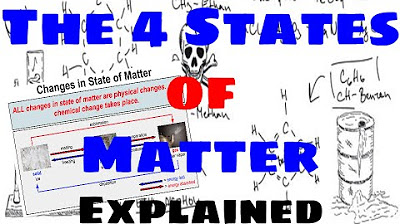KUPAS TUNTAS PERBEDAAN PENGGUNAAN VERB 1, VERB 2, DAN VERB 3 DALAM BAHASA INGGRIS
Summary
TLDRIn this educational video by Mr. Bob from Kampung Inggris, the presenter explains the usage of verb forms in English grammar, focusing on verb 1 (base form), verb 2 (past tense), and verb 3 (past participle). The video covers the basics of present, past, and future tenses, providing examples of how verbs are used with various tenses such as simple present, simple past, and present perfect. Through clear explanations and examples, viewers will understand when and how to use these verb forms correctly in different contexts.
Takeaways
- 😀 Verb 1 (base form) is used to indicate activities happening in the present, such as 'eat' or 'run'.
- 😀 Simple Present Tense uses Verb 1 with subjects like 'I', 'You', 'We', and 'They', without adding 's' or 'es'.
- 😀 In negative sentences of Simple Present Tense, 'do' or 'does' is used with Verb 1 (e.g., 'I don't eat rice everyday').
- 😀 'Do' is used with plural subjects ('I', 'You', 'We', 'They'), while 'does' is used with singular subjects ('He', 'She', 'It').
- 😀 Simple Future Tense uses 'will' followed by Verb 1 (e.g., 'She will eat rice tomorrow').
- 😀 Negative Simple Future sentences use 'will not' (or 'won't') followed by Verb 1 (e.g., 'She will not eat rice tomorrow').
- 😀 For questions in Simple Present and Simple Future Tense, the auxiliary verb ('do', 'does', 'will') is placed at the beginning of the sentence (e.g., 'Do you eat rice every day?' or 'Will she eat rice tomorrow?').
- 😀 Verb 2 (past tense) is used to indicate actions that have occurred in the past, with clear time signals like 'yesterday' or 'last night'.
- 😀 In negative past tense sentences, 'did not' (or 'didn't') is used with Verb 1 (e.g., 'I didn't eat rice yesterday').
- 😀 Verb 3 (past participle) is used in Present Perfect Tense, where 'have' or 'has' is followed by Verb 3 to indicate actions that have been completed but still have relevance to the present (e.g., 'I have eaten rice for an hour').
Q & A
What are the three types of verbs in English?
-The three types of verbs in English are Verb 1 (Base form), Verb 2 (Past form), and Verb 3 (Past participle).
What is Verb 1 and when is it used?
-Verb 1, also called the base form of a verb, is used to indicate actions in the present, especially in the simple present tense and simple future tense.
How is Verb 1 used in the Simple Present tense?
-In the Simple Present tense, Verb 1 is used without adding 's' if the subject is 'I', 'you', 'they', or 'we'. For example, 'I eat rice every day.'
How do you form negative sentences in the Simple Present tense?
-In the Simple Present tense, negative sentences are formed by adding 'do' or 'does' before the verb. For example, 'I don't eat rice every day.'
What is the difference between 'do' and 'does' in negative sentences?
-'Do' is used with the subjects 'I', 'you', 'they', and 'we', while 'does' is used with 'he', 'she', 'it', and singular nouns.
How do you form questions in the Simple Present tense?
-In the Simple Present tense, questions are formed by placing 'do' or 'does' at the beginning of the sentence. For example, 'Do you eat rice every day?'
What is the role of 'will' in the Simple Future tense?
-'Will' is used as a modal verb in the Simple Future tense, always followed by Verb 1. For example, 'She will eat rice tomorrow.'
How do you form negative sentences in the Simple Future tense?
-In the Simple Future tense, negative sentences are formed by adding 'not' after 'will'. For example, 'She will not eat rice tomorrow.'
What is the usage of Verb 2?
-Verb 2 is used to indicate actions that happened in the past, typically with time signals like 'yesterday' or 'last night'. For example, 'I ate rice yesterday.'
What is the difference between Verb 2 and Verb 3?
-Verb 2 is used in the Simple Past tense to show actions that happened in the past, while Verb 3, or the past participle, is used in the Present Perfect tense to describe actions that have an effect on the present. For example, 'I have eaten rice' (Present Perfect).
Outlines

This section is available to paid users only. Please upgrade to access this part.
Upgrade NowMindmap

This section is available to paid users only. Please upgrade to access this part.
Upgrade NowKeywords

This section is available to paid users only. Please upgrade to access this part.
Upgrade NowHighlights

This section is available to paid users only. Please upgrade to access this part.
Upgrade NowTranscripts

This section is available to paid users only. Please upgrade to access this part.
Upgrade NowBrowse More Related Video

The Four States of Matter - Explained

How to Multiply Two Fractions | Multiplying Fractions

Stoikiometri (1) | Menentukan Ar dan Mr | Kimia Kelas 10

PENJASKES KELAS X - SOFTBALL

Menentukan Mr ( massa molekul relatif )

4. Grade 11 Mathematics - Statistics - Standard Deviation Calculations

How to Calculate Circumference of a Circle (Step by Step) | Circumference Formula
5.0 / 5 (0 votes)